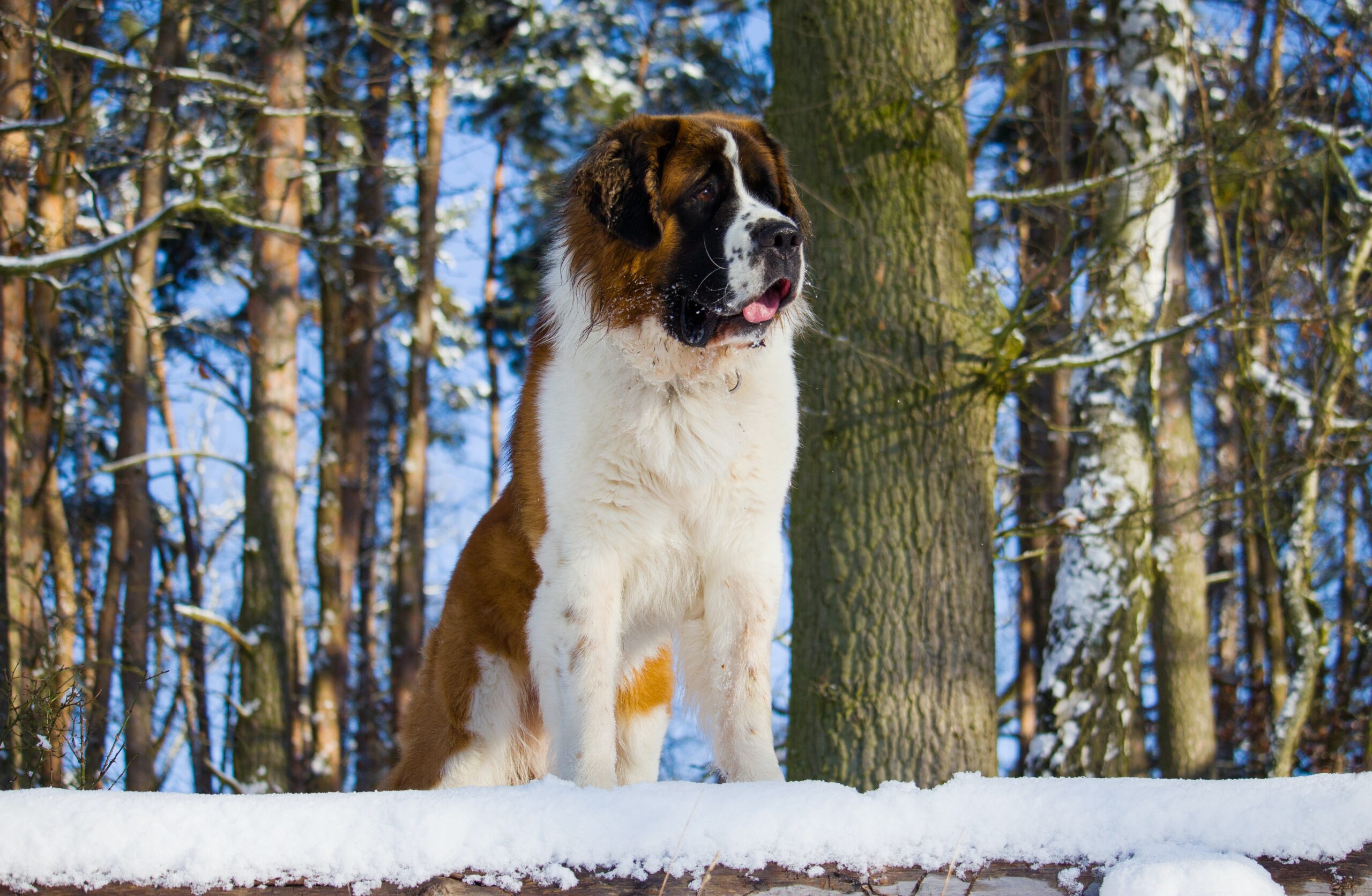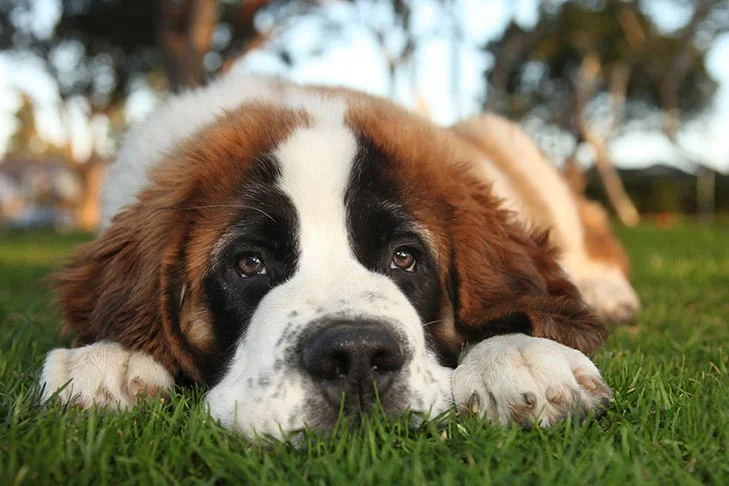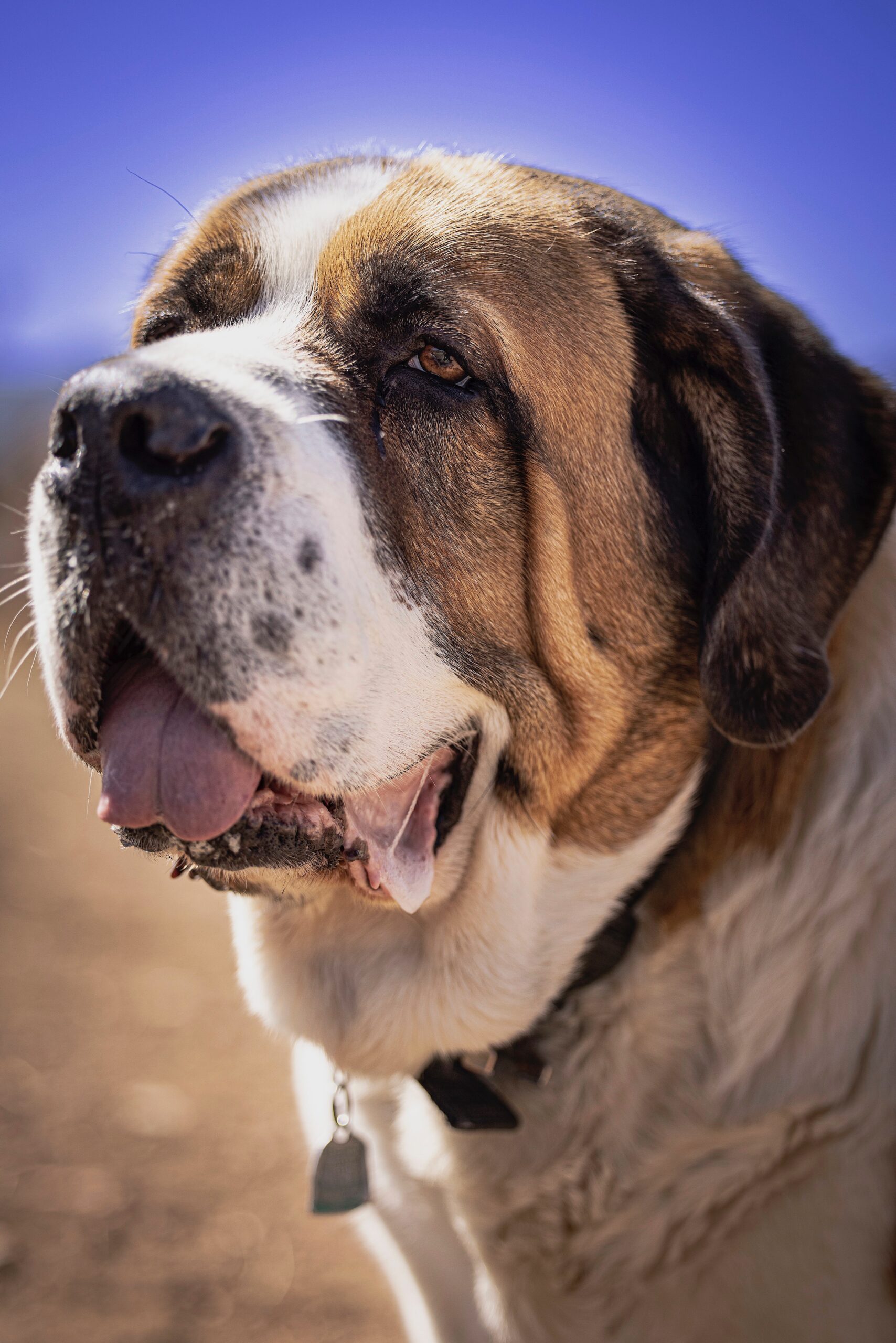The words “very powerful,” “extraordinarily muscular,” “imposing,” and “massive” are frequently used in the Saint’s written standard. Males must stand at least 27.5 inches tall at the shoulder; girls will be shorter and more delicately built. Saints’ enormous head has a furrowed brow, a short nose, and dark eyes that together provide the kind, intelligent expression that was so appreciated by stranded Alpine visitors.
Saint Bernard
Average sizes and life
expectancy of the breed.
Height
28-30 inches (males)
26-28 inches (female)
Weight
140-180 pounds (male)
120-140 pounds (female)
Life Expectancy
8-10 years
Breed Traits & Characteristics
About the Breed

Owning a dog is not just a privilege; it’s a responsibility. They depend on us for, at minimum, food and shelter, and deserve much more. When you take a dog into your life, you need to understand the commitment that dog ownership entails.
 Health
Health
Recommended Health Tests From the National Breed Club:
- Hip Evaluation
- Degenerative Myelopathy DNA Test
- Elbow Evaluation
- Cardiac Exam
- Ophthalmologist Evaluation
 Grooming
Grooming
 Exercise
Exercise
 Training
Training
 Nutrition
Nutrition
History
In order to assist pilgrims traveling to Rome, a monk by the name of Bernard of Menthon (later canonized) founded a hospice there in the year 1050 near a snowy pass in the Alps. Crossing the pass was dangerous at 8,000 feet above sea level with drifts as high as 40 feet. Over several decades, the hospice monks created strong working dogs that could find and save unfortunate visitors trapped by avalanches and drifts. Contrary to popular belief, dogs in the Great St. Bernard Pass did not wear brandy bottles around their necks.





